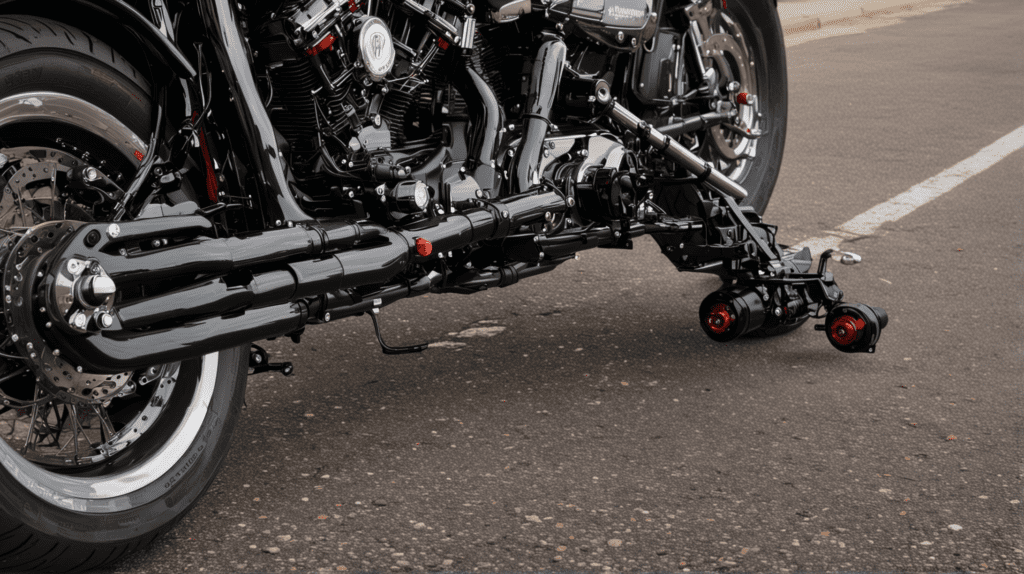The MAP (manifold absolute pressure) sensor is typically found in fuel-injected engines and carbureted Harley motorcycles and it is likely to fail. Over time the wear and tear with this electrical component can result in transmitting incorrect data from the MAP sensor to the engine’s ECU.
There are several reasons the MAP sensor can wear out. This can be due to contamination of carbon or other deposits from the engine. The loose or clogged hoses also affect the sensors to read pressure changes.
Also, excessive overheating can damage the wires or loosen the electrical connectors leading to MAP sensor failure. In this article, we’ve discussed the common symptoms that show a faulty MAP sensor.
What is a Harley MAP Sensor?
MAP sensor, which stands for the manifold absolute pressure monitors the air pressure inside the manifold and the air pressure of the surroundings.
This sensor provides data about the manifold pressure to the engine’s ECU, which stands for electronic control unit. The manifold pressure information is a key source that shows the difference between the engine intake through the piston and the atmosphere.
And, with that differential readings, the ECU adjusts the air and fuel ratio with the ignition timings of the engine to determine the right amount of fuel for combustion.
When this sensor fails to work, it can affect a lot of things. However, before it gets out of work, it gives some hints aka failure symptoms so you can act in advance. Let’s take a look at them.
Harley MAP Sensor Failure Symptoms:
1- Loss of Power:
One of the signs of MAP sensor failure is the loss of power. The Power loss occurs when the MAP sensor monitors or records the wrong data. It leads to a reduction in the fuel injection into the cylinder of the engine.
The engine requires a sufficient amount of fuel and ignition timing for optimum engine performance.
If the engine has enough air-to-fuel mixture ratio, then it’ll be possible to get most of the horsepower out of the engine. The motorcycle will be able to travel with a full tank and there won’t be any damage inside the engine due to lean or rich air-to-fuel mixture.
If there’s any sort of miscalculation of the ignition timing or the fuel. This will lead to a loss of power and poor engine performance.
2- Poor Fuel Economy:
Poor fuel economy is another symptom that indicates MAP sensor failure. When the faulty MAP indicates an incorrect low or high pressure reading to the electronic control module.
The ECM then starts to inject more fuel into the cylinders. This leads to excessive fuel consumption, eventually leading to poor fuel economy. Poor fuel economy can also be due to other reasons but in some cases, it occurs due to a faulty MAP sensor.
If you’re observing a change in the motorcycle’s fuel consumption. Then consider checking out if there’s a fault with the MAP sensor
It is likely to be bad if there are no problems in the fuel delivery network. For example, if you find any leakage in the fuel delivery, it’s not a MAP failure.
3- Difficulty While Starting the Motorcycle:
One of the common signs of MAP sensor failure in Harley motorcycles is difficulty in starting the bike. This can be due to the lean air and fuel mixture, which means there’s too little fuel as compared to air in the engine.
Also, a rich air and fuel mixture (more air as compared to the fuel) leads to the starting problem. For smooth engine performance, there must be a sufficient air/fuel mixture ratio.
Also, this issue occurs when the MAP sensor determines the wrong reading to the Electronic control unit(ECM). If it indicates less air than fuel, the ECM is going to produce more fuel.
Whereas a normal MAP sensor should indicate that there’s a sufficient air-fuel ratio. This incorrect reading leads to no combustion and the engine stalls and fails to start.
4- Misfiring:
Another common symptom of the faulty Harley MAP sensor is misfiring. The reason for this issue is also an overly lean air/fuel mixture.
Which leads to the engine failing to ignite the mixture inside the carburetor. A misfire occurs when the engine doesn’t produce sufficient spark correctly due to a poor mixture of the air and fuel inside the combustion chamber.
If the motorcycle is misfiring more frequently then you’ll need to address the issue quickly to avoid any further mechanical problem.
5- Poor and Sluggish Throttle Response:
Furthermore, you’ll be experiencing a rough throttle response if the problem lies inside the Which means when you pull the throttle you’ll observe that there’s not enough power output or acceleration.
An engine needs sufficient air, fuel, and enough spark to ignite this mixture. If these components are not supplied in appropriate amounts. The engine will fail to produce enough power leading to sluggish or poor throttle response.
The motorcycle will feel more jerky when you pull the throttle. This hesitation or poor acceleration is a sign that the motorcycle’s MAP sensor is faulty.
6- Stalling and Rough Idle:
The rough idling is also one of the signs that indicates an issue with Harlye’s MAP sensor. Usually, when the MAP sensor gets out of adjustment it leads the idle to run very sensitively.
Usually, the stalling issue occurs due to faulty spark plugs, clogged fuel injectors, or a vacuum leak. However, sometimes this issue can occur due to faulty MAP sensors.
When the motorcycle’s engine isn’t supplied with sufficient air/fuel mixture, the fuel fails to ignite, and the bike stalls. One of the most common reasons the engine fails to stall is when it doesn’t get enough air.
7- Check Engine Light Indication:
The appearance of the check engine light indicates a faulty MAP sensor. The ECU (engine control unit) is responsible for monitoring all the sensors in the motorcycle’s engine.
The motorcycle’s check light engine indicates that there’s an issue with the internal engine. Some of the problems it can indicate include misfiring, lean combustion,
or insufficient fuel.
It indicates that there’s an issue with the MAP sensor’s valve and the check engine light will start to be visible.
8- Excessive Overheating and Backfiring:
Backfiring occurs when the fuel inside the engine’s combustion chamber doesn’t ignite properly.
This unburnt fuel ends up in the exhaust pipe and as a result, the exhaust pipe becomes really warm and the air/fuel mixture gets combust there.
You’ll be hearing a loud bang noise from the exhaust system which is the sign of a backfiring engine. The lean air-to-fuel ratio is the reason that leads to excessive overheating inside the engine.
9- Lean or Rich Air and Fuel Mixture:
The major role of the MAP sensor is to measure the air pressure in the intake manifold. To calculate the right amount of air and fuel mixture.
A faulty MAP sensor will lead your engine to get a lean or rich air and fuel mixture. If the MAP sensor indicates a rich air and fuel mixture, this wrong indication will lead the engine to use more fuel resulting in a poor fuel economy.
However, if this sensor shows a lean air-to-fuel ratio. Then this wrong indication can lead to loss of power, overheating, backfiring, or poor fuel economy.
10- Unusual Smell from Engine:
Another sign indicating a faulty MAP sensor is the unusual smell of gasoline. The faulty MAP sensor results in the wrong amount of air/fuel ratio being mixed inside the combustion chamber.
There might be a small amount of fuel as compared to the air, or more amount of fuel as compared to the air. This insufficient air/fuel mixture results in an unusual smell of the gas in the surroundings.
If you’re experiencing any odd smell from the engine, then there are chances of fault inside the motorcycle’s MAP sensor. Unless there’s any issue with the oil reserve or fuel system, it’s an issue with the MAP. Yet, you need to find it out exactly.
How to Fix Harley’s MAP Sensor Failure Issue?
Some of the possible ways to fix the Harley’s MAP sensor failure issue include inspecting the wirings and connection. So firstly, you’ll need to physically examine the MAP sensor.
Check out if there’s any loose, broken, or damaged wire. Check out the MAP sensor pins and make sure they are free from dust or debris. Moreover, you’ll need to check out the wiring between the ECM and MAP sensor. You should connect them properly.
Also, check out the hose which connects the intake manifold to the sensor. It should be connected tightly to the sensor. Also, the dust or carbon deposit blocks the hose. Which leads to poor MAP sensor readings.
If you haven’t figured out any external issue with the wiring or connection. You can also check out the MAP sensor output. You’ll need a voltage meter or digital multimeter to check out the voltage difference between vacuum and no vacuum.
In case the MAP sensor still shows symptoms of fault and the output isn’t sufficient then you’ll need to replace it.

Tonmoy, the brains behind the influential motorcycle-focused website, TwoWheller.com, is a dedicated and passionate advocate for biking culture. Born and raised in a family of motorcycle enthusiasts, his love for two-wheeled transportation was ignited at an early age. His commitment to providing in-depth reviews and helpful tips for riders has established him as a respected figure in the motorcycle community.

